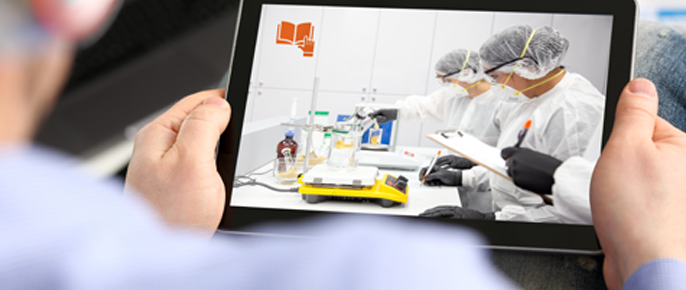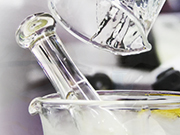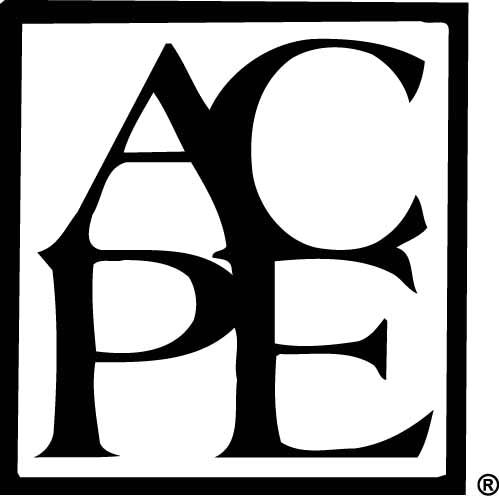Achieving Best Practices: Non-sterile Compounding Training - Home Study

Learning Objectives | Contributors
| This home study serves as a prerequisite to the live activity, The Science of Pharmaceutical Compounding: Non-Sterile Training. While attendance at the live event is not mandatory to receive home study CE credit, participation in the live event will afford the participant an opportunity to practically apply the activity’s core concepts and to practice, under expert supervision, the preparation and quality control verification procedures related to a broad range of non-sterile dosage forms. |  |
Please note: If you are attending the live event, your home study can be accessed by navigating to the course page for your specific live event location & date. The version of the home study on this page is for those who are not attending a live event.
Today, operating or working in a compounding facility in the role of pharmacist or technician is more sophisticated. To distinguish your practice and meet the demands of this growing market, the adoption of a best practices model to manage a compounding pharmacy is essential. The implementation of best practices implies being efficient and effective (i.e., doing the right thing right). The overarching topics addressed in this program can be categorized into three components; standards of practice, business development, and compounding processes.
Implementing Standards of Practice
One of the primary objectives of this activity is to highlight the necessity of operating within a regulated and well-documented framework that adheres to established standards of practice. To do so, participants will learn how to practically implement and apply standard operating procedures, competency trainings, and ongoing compliance assessments with the fundamental philosophy of continuous quality improvement.
Business Development and Growth
A well-developed business acumen is also essential in operating a successful compounding practice. This activity will provide participants with applicable marketing and business strategies to kick-start or enhance their compounding practice.
Optimizing Compounding Processes
Compounding process development brings together everything from the physicochemical properties, uses, and applications of raw ingredients to finished compounded preparations. The fundamental first steps of every compounding process is knowing what ingredient to select; how to interpret and implement information found in a monograph and certificate of analysis; pharmaceutical calculations, including potency adjustments, salt-base conversions, water-content adjustments, among more. From here, participants will review key preparatory techniques and the integration of technology when formulating different non-sterile dosage forms (e.g., oral liquids, capsules, topicals, molded dosage forms, etc.). Lastly, emphasis will be placed on verification procedures to ensure the quality, safety, and integrity of the compounded preparation.
With these three foundational components, this activity provides participants with the fundamental tools and knowledge needed to meet today’s compounding practice requirements. By taking this activity, the participant will realize the value, and gain the necessary knowledge and skills, to adopt and implement a best practices model for years to come.
Intended audience
Pharmacists and pharmacy technicians new to non-sterile compounding or with an existing compounding practice.
Instructional Design
Home study with learning assessment.
Learning Assessment:
Please make sure to complete the home study learning assessment within 60 days of purchase. If this is not possible, please contact the LP3 Network Team.
Learning Objectives
FOR PHARMACISTS:
- Relate unique and essential central core concepts.
- Describe regulatory framework requirements.
- Discuss standards of practice for non-hazardous and hazardous drug compounding.
- Defend components of a standard operating procedure.
- Apply business, marketing, and sales for a successful practice.
- Explain characteristics for routes of delivery in non-sterile compounding.
- Describe the chemical composition of different dosage forms.
- Apply pharmaceutical calculations to compounding.
- Match excipients to dosage forms, chemical composition, and routes of delivery.
- Match base types to dosage forms, chemical composition, and routes of delivery.
- Employ drug monographs and certificates of analysis to compounding.
- Describe techniques and technology used during compounding.
- Apply the components of process development.
- Rewrite a master formulation record.
- Discuss the requirements of a compounding record.
FOR PHARMACY TECHNICIANS:
- Relate unique and essential central core concepts.
- Review regulatory framework requirements.
- Explain standards of practice for non-hazardous and hazardous drug compounding.
- Describe components of a standard operating procedure.
- Discuss business, marketing, and sales for a successful practice.
- Explain characteristics for routes of delivery in non-sterile compounding.
- Describe the chemical composition of different dosage forms.
- Solve pharmaceutical calculations in compounding.
- Match excipients to dosage forms, chemical composition, and routes of delivery.
- Match base types to dosage forms, chemical composition, and routes of delivery.
- Relate drug monographs and certificates of analysis to compounding.
- Describe techniques and technology used during compounding.
- Outline the components of process development.
- Demonstrate the use of a master formulation record.
- Discuss the requirements of a compounding record.
Editors
 NEIL COHEN, BSc NEIL COHEN, BScCE Program Developer Disclosure: None |  |
CONTRIBUTORS:
JOE CABALEIRO, BS Pharm, RPh |  |
JENNIFER CLARE, BSc |
MARK FILOSI, BS Pharm, RPh |
This learning activity has received financial support from MEDISCA Inc. in the form of an educational grant.
Total CPE Credits (home study): 24 CPE Hours = 2.4 CEUs
Joint Providership Status (CPE Consultants, LLC / LP3 Network)
Home study activity type: Knowledge-based
Home study UAN: 0864-9999-20-016-H07-P/T for pharmacists and technicians
Home study CPE credits: 24 CPE hours = 2.4 CEUs
Release date: May 1, 2020
Expiration date: May 1, 2023
To receive CPE credits for the home study, participants must complete a learning assessment with a score of 70% and submit a completed evaluation.
 | CPE Consultants, LLC is accredited by the Accreditation Council for Pharmacy Education as a provider of continuing pharmacy education. |
After purchasing, you will be prompted to select the version you wish to enroll in:
- Canadian version of the Home Study
- US version of the Home Study
Price
There are no refunds, returns, or transfers upon purchase of the home study.

 Facebook
Facebook X
X LinkedIn
LinkedIn Forward
Forward